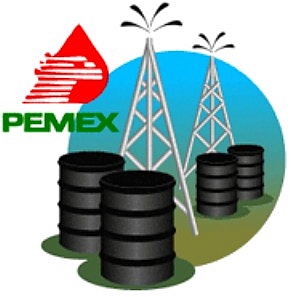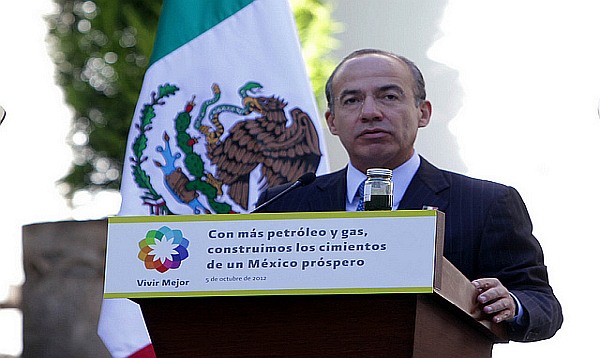Mexico City, Mexico – Mexican President Felipe Calderon announced on Friday that another significant crude discovery has been made at a well in deep waters of the Gulf of Mexico, hailing the find as confirmation of a "huge oil system" in that region.
In a ceremony at the Los Pinos presidential residence, Calderon said state oil monopoly Petroleos Mexicanos (Pemex) made the find at the Supremus 1 well, located some 155 miles east of the city of Matamoros, Tamaulipas state, and roughly 25 miles south of Mexico’s maritime border with the United States.
The well was drilled to a water depth of 9,422 feet and a total depth of nearly 13,124 feet, Calderon said, adding that with the find Pemex expects to book between 75 million and 125 million barrels of new 3P (proven, probable and possible) reserves.
He added that if those parameters are confirmed with new drilling and scientific studies, production equivalent to roughly 10 percent of Pemex’s current annual output could come from that well alone.
But most importantly the discovery – which comes on the heels of a recent find at the Trion 1 well in that same region – provides greater certainty about the existence of a "huge oil system" in deep waters of the northern Gulf of Mexico.
 |
The Trion 1 find, which Calderon announced on August 29th, has a production potential of 350 million barrels.
In the wake of the discoveries at the Trion 1 and Supremus 1 wells, the president said the estimated potential of the entire oil system in that region stands at "between 4 billion and 13 billion barrels of oil."
If the maximum limit of that potential is confirmed, 13 billion barrels, Mexico’s 3P reserves would climb from 42 billion to 55 billion barrels, or an increase of more than 25 percent, Calderon said.
However, if 13 billion barrels were to be added to Mexico’s proven reserves, a process that will take years, this system now being discovered in deep waters of the northern Gulf would more than double the proven reserves of Petroleos Mexicanos.
"This system would give us another 10 years of oil production at least," President Calderon, who leaves office on December 1st, said.
He also hailed his administration’s decision to invest in deepwater oil exploration and development in a bid to keep Mexico in the forefront of global crude production.
Pemex, the world’s No. 4 oil producer with output of 2.5 million barrels a day, is the biggest contributor to Mexico’s federal budget and is one of the few oil firms worldwide that handles all aspects of the productive chain, from exploration, to distribution, and the marketing of end products.
Mexico’s oil output totaled almost 3.4 million barrels per day in 2004, but has since fallen due to a sharp decline in production at shallow offshore Cantarell, formerly Mexico’s most productive field, and many years of insufficient investment.
The government, however, said last year that Pemex had succeeded in halting a steady annual decline in its reserves dating back to 1979.
A recent oil sector overhaul in Mexico gave the oil monopoly – created when the country’s oil industry was nationalized in 1938 – more freedom to undertake projects with private firms, which are to be hired under incentive-based service contracts.
Experts agree that the domestic energy industry’s future is in the deep waters of the Gulf of Mexico.
The state oil monopoly, however, lags far behind US oil majors in its ability to develop that challenging region, a problem blamed by many analysts on the company’s highly regulated operations and the fact that it accounts for nearly a third of the Treasury’s revenues, leaving little money to invest in new technologies.


